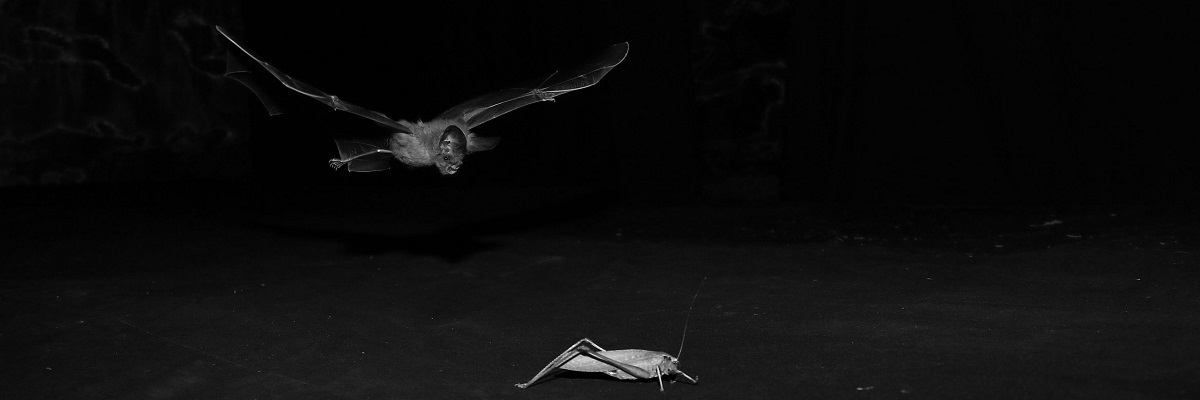Eavesdropping bats take longer to capture crickets signalling in groups

Photo: Stefan Greif
Male crickets are known to form groups and signal together to attract females. Calling in a group attracts more females and hence opens up more mating opportunities for the signalling males. But these signalling males also risk attracting eavesdropping predators like bats. Does this risk increase when they call as a group?
In a new study, Harish Prakash and Rohini Balakrishnan from the Centre for Ecological Sciences (CES), with collaborators from Tel Aviv University, tested whether calling in a group reduces risk for katydids (bush crickets) against bats, which are their predators. In a choice experiment, they found that bats were more attracted to three speakers playing katydid calls than a single speaker. Does this mean calling together in a group might be riskier? Yes. But that is just one part of the story.
The researchers also tested how long it takes for bats to capture a calling katydid when it is alone compared to when it is in a group of katydids calling simultaneously. Bats took considerably longer to capture a katydid calling in a group of three than a lone katydid. This delay in capture time gives the katydid an opportunity to stop calling, and escape from being eaten. Therefore, although katydids calling in a group can attract bats, the bats’ inefficiency in capturing katydids in groups can benefit the prey.
Why do bats take more time to capture prey calling in a group? A possible reason is a confusion effect: it is harder for a predator to target and capture an individual when it is among many. Previous studies have looked at this only in visual predators like monkeys, geckos and fish. This study provides the first evidence of an auditory confusion effect in eavesdropping predators such as bats.
REFERENCE:
Prakash, H., Greif, S., Yovel, Y., & Balakrishnan, R. (2021). Acoustically eavesdropping bat predators take longer to capture katydid prey signalling in aggregation. Journal of Experimental Biology Vol. 224 (10), jeb233262
https://journals.biologists.com/jeb/article-abstract/224/10/jeb233262/268371/Acoustically-eavesdropping-bat-predators-take
LAB WEBSITE:
http://ces.iisc.ac.in/rohini/




